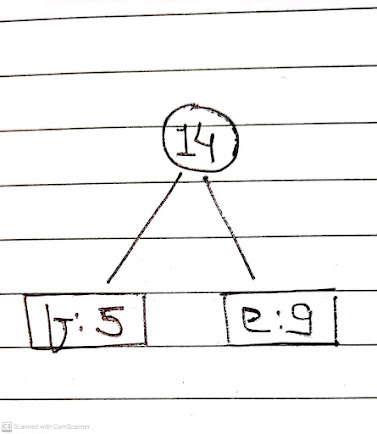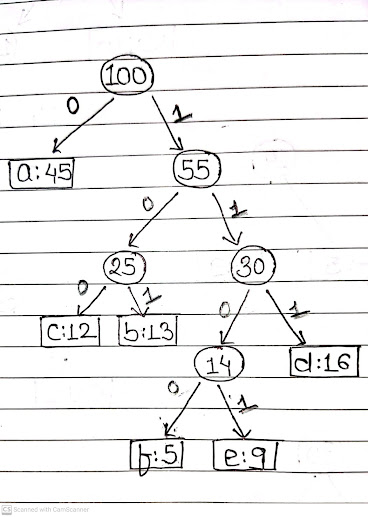Huffman Algorithm
Huffman algorithm is a lossless data compression algorithm. It was developed by David Huffman. It is simply a technique for compressing data to reduce its size without losing any information.
Lots of compression systems use the Huffman algorithm for the compression of text, images, video, audio, data, etc. The general idea behind the Huffman algorithm is to use less number of bits to represent the most used keys.
For example:
Let's say we get four kinds of signals in the system.
A B C D
For such system, we might use 2 bit representation as:
A=00
B=01
C=10
D=11
Suppose we have data string as
AAABCAABBCDDAAAABAAABABABADDAAAABC
If the number of A is 10,000, B is 234, C is 45 and D is 134, then total storage required will be (10,000+234+45+134)*2 = 20,826 bits. According to Huffman, since A is repeated 10,000 times so space for it can be automatically reduced as a result total storage is also reduced.
While assigning the code word, the most frequently used symbol is assigned a codeword of length 1, and the final one gets a code word with all ones.
A=0
B=10
C=110
D=111
Now, for given data string the binary value will be
00010110001010110111111000010000100100100111111000010110
- If we calculate the total bits required to store the data, it will be
- 10,000*1+ 234*2+45*3+134*3= 11,005 bits
- Total memory saved= 20,826- 11,005= 9,821 bits
- If the data to be stored is very large, then more bits will be saved.
- But the problem is how are going to recover the original data from the compressed string.
As a result, a tree is made according to the codeword assignment.
 |
| HUFFMAN TREE |
Now, to decode the encoded string, read a bit at a time. Compare with a root node. If it is 0, then we are at the end decision point. So, it must be A. If it was 1, then we have to read the next bit again and check. If the next bit is 0 then it is B. Otherwise, read the next bit and check until we do not reach a decision point.
Construct a Huffman Code for the given Symbols.
| Character | a | b | c | d | e | f |
|---|---|---|---|---|---|---|
| Frequency | 45 | 13 | 12 | 16 | 9 | 5 |
| 5 | 9 | 12 | 13 | 16 | 45 |
Note: Create a Tree with the two lowest priority frequencies
| 12 | 13 | 14 | 16 | 45 |
| 14 | 16 | 25 | 45 |
| 25 | 30 | 45 |
| 45 | 55 |
- They are used for transmitting fax and text.
- They are used by conventional compression formats like PKZIP, GZIP, etc.
- Multimedia codecs like JPEG, PNG, and MP3 use Huffman encoding(to be more precise the prefix codes).

.jpeg)
.jpeg)
.jpeg)
.jpeg)
